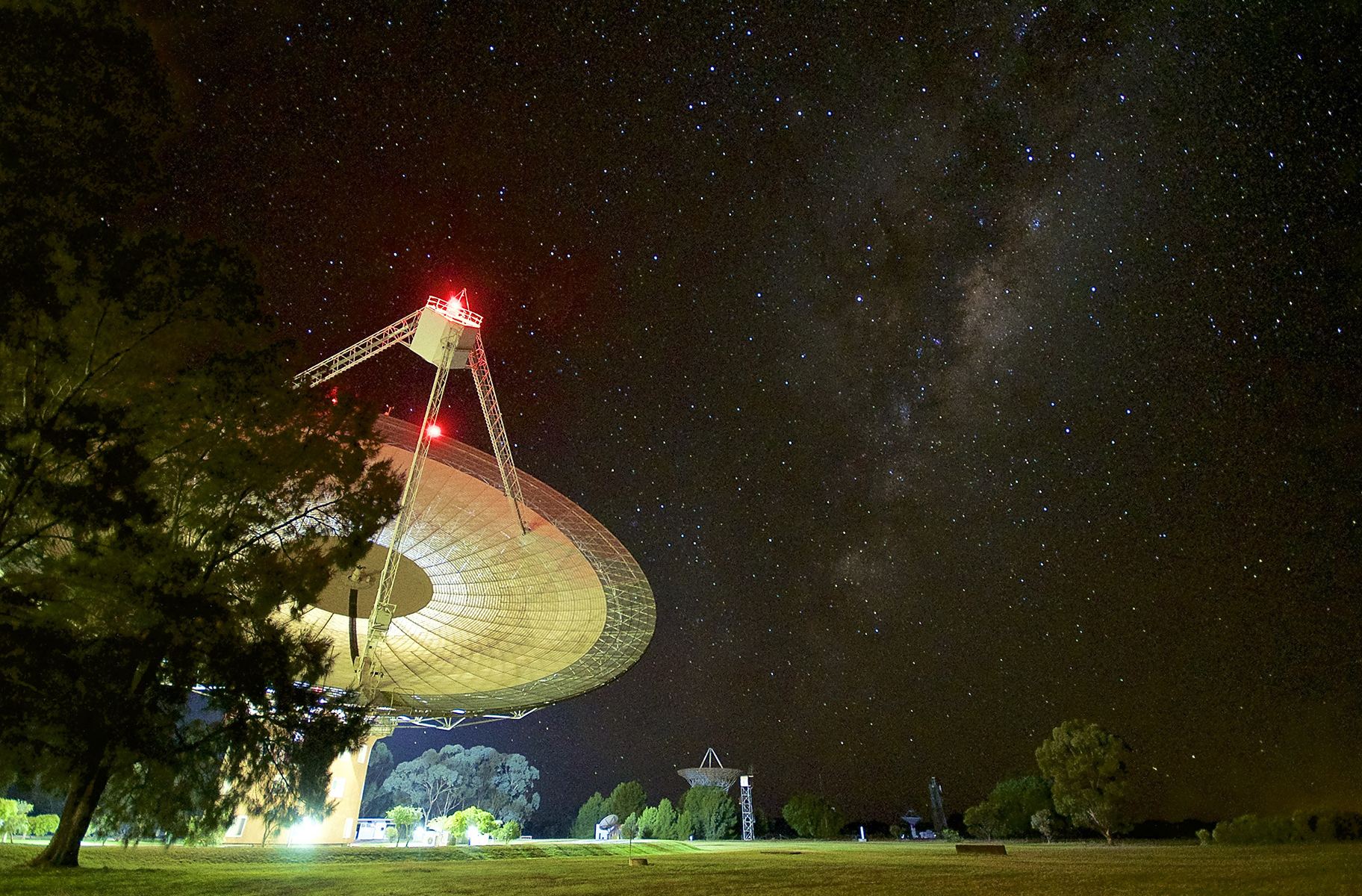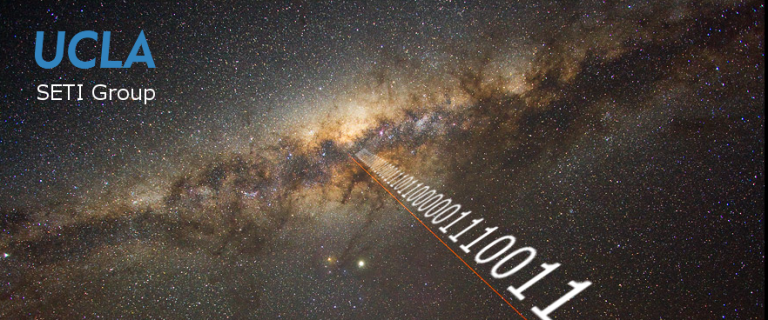
Since the mid-20th century, scientists have been looking for evidence of intelligent life outside the solar system. For most of this time, participants in the Search for Extraterrestrial Intelligence (SETI) have relied on radio astronomy observations to try to infuse technological activity (signs of which are called technomarkers ). In the near future, these attempts will only become more intense, since today the presence of 4375 exoplanets has already been confirmed .
In preparation for the search, the researchers looked at other possible technomarkers worth looking for. According to Michael Hippkefrom the SETI Research Center at the University of California, Berkeley, this search needs to be broadened to include quantum communications. Since quantum computers and related technologies are almost ripe nowadays, it makes sense to include them in the list of technomarkers.
In recent years, the search for technosignatures and the discussion of exactly which features will be the most promising technomarkers have gained renewed interest. Not least this is due to the fact that in the coming years there will be next-generation telescopes, with the help of which it will be possible to study thousands of recently discovered exoplanets. And when such tools are ready to search for needles in the cosmic haystack, astrobiologists will need to know exactly what to look for.
In September 2018, NASA held a workshop on technomarkers, followed by a report on technomarkers . By August 2020, NASA and the Blue Ball Institutesponsored another meeting, Technoclimes 2020, to discuss concepts for finding technomarkers that go beyond standard radio signals. Hippke had something to add as he dedicated his career to the SETI project.
State of searches today
Modern SETI work began in 1959, when the famous pioneer of this project, Giuseppe Coccioni, and the physicist Philip Morrison of Cornell University, published the landmark work Searching for Interstellar Communication. In it, they recommended looking for signs of intelligent life in a narrow range of the radio spectrum.
Two years later, a paper on this topic, Interstellar and Interplanetary Communication Using Optical Masers, was published by Schwartz and Townes of the Institute for Defense Analysis in Washington. They suggested that optical pulses from microwave lasers could be indicative of communications from extraterrestrial intelligence.
As noted in his new workHippke, it's been six decades and a hundred search programs. The search for these specific technomarkers has not been crowned with anything definite. And it's not that scientists are looking for the wrong tech markers - it just might be helpful to broaden the scope of the search. Hippke writes that “we are looking for bursts of lighthouses in a narrow radio range, although we have not found them yet. But we can expand our searches. Some astronomers believe that you just need to "tune in to the right wave" and we will connect to the wave of galactic communication. "

Quantum revolution
Although virtually all attempts to create quantum processors began recently, from the beginning of this century, the concept itself has existed since the early 1970s. Then Stephen Weisner, a physics professor at Columbia University, suggested that information could be coded secretly using the principle of superposition.
The principle says that the spin of an electron - its fundamental quantum property, which can be directed downward or upward - can be in both states at the same time. And if up and down can be considered the zero and one of the binary code, then superposition allows quantum computers to perform exponentially more computations in a given time.
Hippke talks about four possible reasons why extraterrestrial intelligence might resort to quantum communication. These are access control, quantum supremacy, information security and information efficiency. According to him, such communications are preferable to classical ones from the point of view of security and information efficiency, and all previous searches would not have found them.
Over the past hundred years, the use of computers has grown from isolated cases to a worldwide network, and in the future, there may be an interplanetary network. Perhaps humanity will rely on interstellar quantum networks to enable distributed computing and transmit qubits over long distances.

If we assume that humanity is not a deviation but an example of the norm (according to the Copernican principle ), it is logical to assume that an advanced civilization could already create such a network. Hippke proposes four possible methods for encoding data on such a network.
The first is polarization coding, which relies on vertical and horizontal polarization of light. The second is the Fock state of photons, when the signal is encoded as a switch between a discrete number of particles and vacuum. In addition, time coding is possible, when particles arrive ahead or late, and coding by the coherent state of light, when light is compressed in amplitude or phase.
Secrecy and superiority
Access control will be one of the main benefits of quantum communications - it is especially interesting for how it will affect the work of the SETI project. After all, the discrepancy between the statistical probability of the existence of intelligent life in our Universe and the lack of evidence of its existence (Fermi paradox) requires an explanation.
Hippke believes that aliens can deliberately choose communications that are invisible to insufficiently advanced civilizations. Most advanced civilizations will want to keep "monkeys" out of the common channel of communication, and only allow community members who have reached the required minimum in development to participate in communication. Quantum communications can become such a minimum.
For the first time, Mitseslav Sabotovich, a Polish professor of astrophysics, spoke about quantum communications in 1979. In his work "Interstellar communications on neutrino rays" Sabotovich argued that the complexity of using this method will become arguments in favor of its choice for a fairly advanced extraterrestrial civilization.
Hippke noted that this method allows communication only with a similarly advanced civilization, but at the same time makes the detection of these communications, tied to entangled pairs of neutrinos, almost impossible. Therefore, it will be better to control access with the help of entangled photons, which, moreover, will be easier for the recipient to detect.
Also, quantum communications are preferable because of their increased security - this is one of the reasons for their development on earth. The method of quantum key distribution (KRK) allows two parties to get the shared key, suitable for encryption and decryption of secret messages. In doing so, it enables the parties to detect the presence of a potential third party trying to intercept their message. Any attempt to measure a quantum system will collapse the wave function, and this will create detectable anomalies in the system.
Another advantage of quantum computers is that they solve problems exponentially faster than classical computers, the so-called. "Quantum superiority". A classic example is Shor's algorithm, a quantum algorithm for factoring a number into prime factors, which will take years for a classical computer to compute, and a few seconds for a quantum one.

In conventional computers, public key encryption (such as RSA-2048) uses mathematical functions that take a lot of computer time to compute. In theory, quantum computers can crack such encryption in a matter of seconds.
Last but not least, quantum computers have high information efficiency of photons - that is, the number of bits per photon. Hippke believes that quantum communication will improve this efficiency by about a third. In this sense, the search for more efficient ways to transfer data will inevitably lead to quantum networks.
Problems
Of course, no argument about the search for alien intelligence would be complete without mentioning possible problems. First, there is the problem of decoherence - energy and information are lost in the environment. In interstellar communications, the main problems will be distances, free electrons, interplanetary dust and the medium - clouds of low-density dust and gas.
On Earth, the maximum distance at which successful optical entanglement experiments have been carried out is 144 km. The mass density of the Earth's atmosphere is 1.2 kg / m 3 , so a signal traveling along a 144 km path had to deal with an areal density of 1.728 × 10 5 kg / m 2... This density between the Earth and the nearest star (Proxima Centauri) will be several orders of magnitude less: 3 × 10 -8 kg / m 2 .
Another problem is the inevitable delay in a relativistic universe. Even messages transmitted to the nearest star systems will go there for years. Most of the quantum computing will be done on-site, and only compressed qubits will be transmitted between communication nodes. Therefore, in the coming years, humanity will be able to focus on several key features of such communications.
What to look for?
So far, SETI equipment that monitors the visible part of the spectrum is not suitable for receiving quantum messages - there is no such technology yet. However, it can receive photons, read their spectrum, and carry out polarization experiments.
Hippke believes that in this way it will be possible to isolate signals from the background noise of space. A similar idea was expressed by Professor Lubin in his 2016 work "The Search for Directed Mind", where he said that when using optical signals from lasers to transfer energy or data, there will inevitably be an "excess" of photons that can be detected.
These photons can be captured in observatories and studied for signs of coding using various technologies. One such technique proposed by Hippke is long-term interferometry, in which a variety of instruments track the amplitude and phase of electromagnetic fields and compare them to a baseline to detect signs of coding.
Perhaps, if we start to eavesdrop on quantum communications of extraterrestrial intelligence, some of the information will be lost, and this intelligence will know about our presence, if it did not know about us before. Then some will probably say that it is better not to intercept the message of more evolved beings.